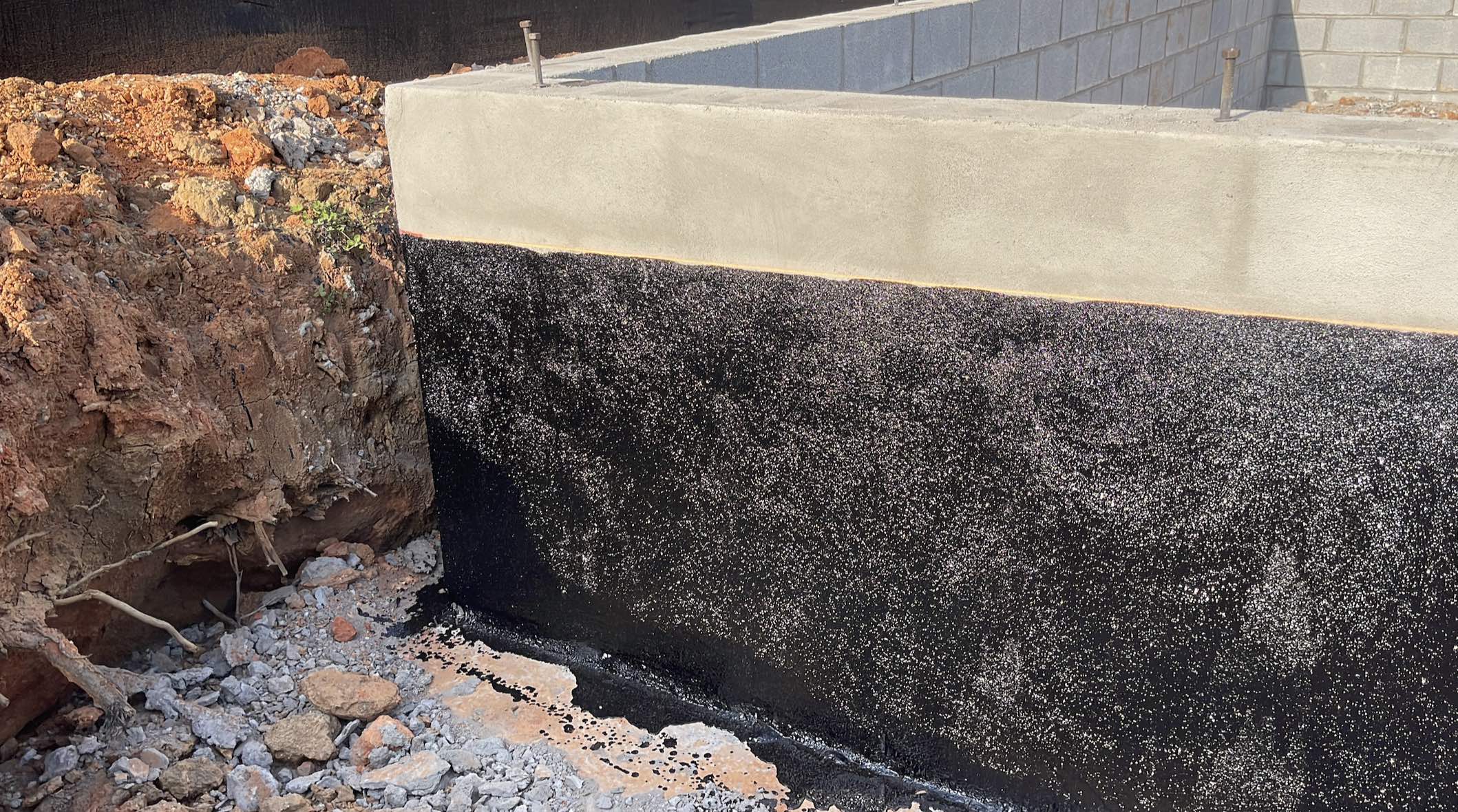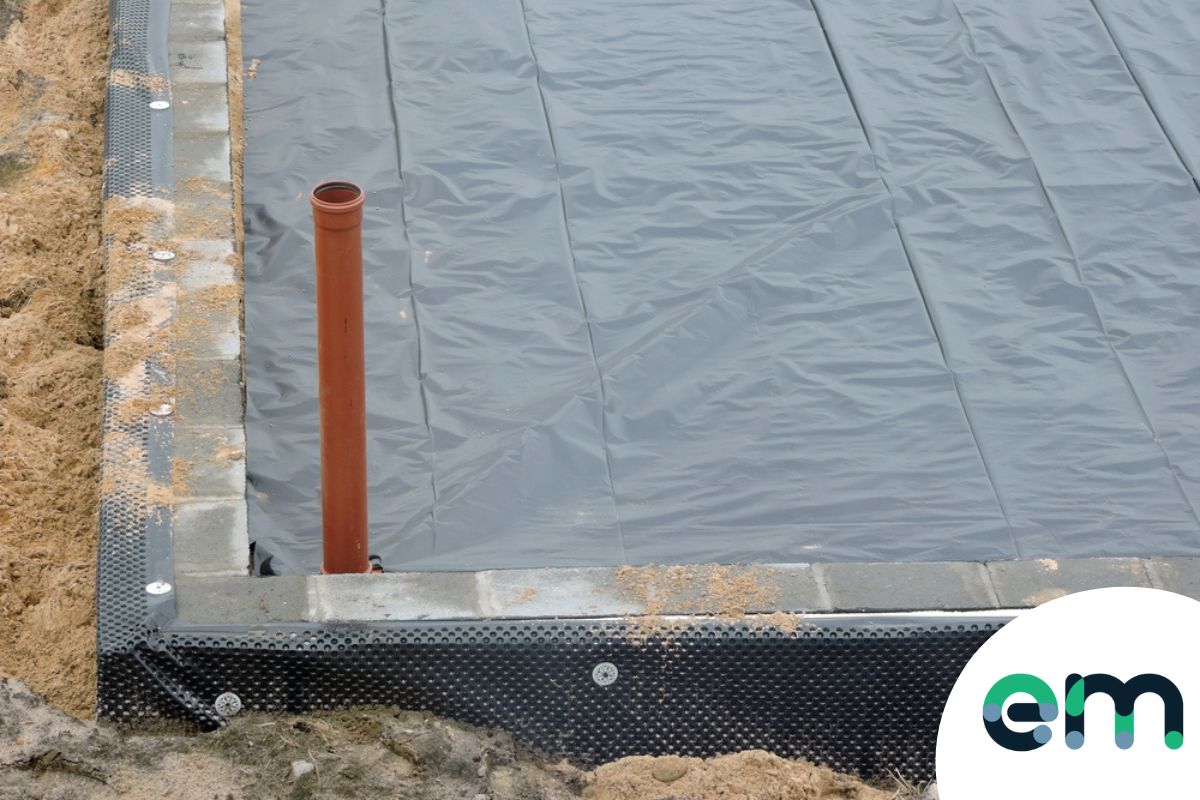Why investing in hiring a mould treatment newcastle professional
Wiki Article
Checking Out the Numerous Strategies and Solutions for Effective Damp Proofing
Dampness in structures postures significant challenges to both structural honesty and indoor air quality. Various strategies and remedies have actually emerged to fight this pervasive concern. From traditional damp-proof membranes to innovative chemical treatments, each approach uses unique benefits. Comprehending these options is essential for effective moisture control. Nonetheless, picking the appropriate solution depends on specific structure problems and demands, motivating more exploration into one of the most effective wet proofing strategies readily available.Comprehending the Reasons For Dampness
Although moisture can occur from various sources, comprehending these causes is crucial for efficient removal. Commonly, wetness originates from three main resources: climbing moist, passing through wet, and condensation. Rising moist takes place when groundwater travels upwards through porous products, such as brick or rock, frequently due to a lack of an effective barrier (mould removal newcastle). Permeating damp is typically brought on by external variables, consisting of roofing leakages, malfunctioning gutters, or damaged wall surfaces, allowing water to infiltrate a property. Condensation, on the various other hand, results from excess dampness airborne, usually exacerbated by poor ventilation and temperature differences, resulting in water droplets basing on surfaces. Recognizing these underlying concerns is important, as each kind of wetness needs a tailored approach for removal. Proper analysis assists in identifying one of the most reliable solutions, ultimately protecting the architectural honesty of a building and boosting indoor air high qualityTypical Damp-Proof Membrane Layers

Chemical Damp-Proofing Solutions
Chemical damp-proofing solutions provide an innovative technique to preventing moisture intrusion in structures. These approaches commonly entail the application of liquid chemicals that penetrate masonry and create a barrier versus increasing damp. Frequently utilized chemicals include silanes, siloxanes, and various other water-repellent representatives that react with surface area products to create a hydrophobic layer.The application process generally needs drilling openings into the walls, injecting the chemical service, and enabling it to cure. This approach is specifically advantageous for older frameworks where conventional damp-proof membrane layers may be impractical. In addition, chemical damp-proofing can be much less turbulent and much more affordable than considerable improvement projects.While reliable, these options rely on proper application and ecological problems for peak performance. Routine maintenance and surveillance are necessary to guarantee the long life of the damp-proofing treatment. Generally, chemical damp-proofing represents a functional choice for safeguarding structures against moisture-related damagesCavity Wall Construction Strategies
Dental caries wall surface construction methods use many benefits, specifically in dampness control and energy performance. By including an air space in between two layers of masonry, these wall surfaces successfully mitigate water ingress while improving insulation. This combination not only secures frameworks from wetness however additionally adds to minimized power usage.Benefits of Cavity Wall Surfaces
When taking into consideration efficient damp proofing techniques, the benefits of dental caries walls stand out plainly. Tooth cavity wall surfaces include 2 different layers, producing an air void that efficiently lowers dampness penetration. This style decreases the threat of wetness, as the external wall surface works as a barrier against rainfall and water access. Additionally, tooth cavity walls boost thermal insulation, which adds to power effectiveness by decreasing heat loss. They additionally give sound insulation, assisting to produce a quieter indoor setting. The air space allows for ventilation, which assists in dampness control and lowers the likelihood of mold and mildew development. These advantages not only enhance the total convenience of a building however also contribute to its longevity and architectural honesty.Wetness Control Methods
Effective dampness control approaches are critical in cavity wall building to ensure long-term protection versus wetness. One primary technique includes the unification of weep openings, which facilitate water drainage from the tooth cavity, preventing buildup. Furthermore, the usage of breathable membranes can aid manage wetness degrees while enabling caught vapor to run away. Appropriate positioning of insulation is also vital, as it must not block drain courses. Additionally, making certain that the external leaves of the tooth cavity wall are constructed with waterproof products boosts total sturdiness. Normal maintenance checks are vital to recognize any type of blockages or damage early, guarding the framework's stability. Eventually, a combination of these techniques develops a durable defense versus moisture breach in dental caries wall surfaces.
Insulation and Energy Performance
Insulation plays an important duty in boosting power efficiency within dental caries wall building and construction. By integrating insulating materials, these walls develop a thermal obstacle that lessens heat loss and reduces power consumption. Reliable insulation not only assists preserve a steady interior temperature level yet likewise minimizes the threat of moisture, as it prevents condensation within the wall surface dental caries. Different strategies, such as making use of inflexible foam boards or mineral wool, can be utilized to achieve perfect insulation performance. In addition, correct installation is vital to ensure that gaps and voids are lessened, which can or else compromise power efficiency. Inevitably, a well-insulated cavity wall contributes substantially to general sustainability and reduces heating & cooling prices for home owners.External Damp Proofing Techniques
Outside damp proofing approaches are crucial for safeguarding frameworks from dampness seepage. 2 reliable methods consist of the application of water-proof membranes and the installment of French drains. These remedies assist reduce water build-up and maintain the honesty of structures.mould treatment newcastle
Waterproof Membrane Application
While various methods exist for avoiding moisture ingress, the application of waterproof membrane layers stays an extremely effective external wet proofing method. These membrane layers are normally made from materials such as polyethylene, rubber, or customized bitumen, giving a durable barrier versus water infiltration. The installment procedure includes using the membrane to the external surface areas of walls or foundations, making certain full insurance coverage to avoid leaks. Correct attachment and securing at joints are critical to making the most of efficiency. Water resistant membrane layers can be applied in different types, including fluid layers and sheet membrane layers, permitting adaptability based upon the certain demands of the structure. This technique not only shields structures from wetness but additionally enhances their durability and structural stability.French Drainpipe Setup
One reliable technique for handling groundwater and preventing wetness buildup around a building's foundation is the installment of a French drainpipe. This drain system contains a trench loaded with gravel and a perforated pipeline that reroutes surface water away from the foundation. Correct setup needs careful preparation, making sure that the drain inclines far from the structure to assist in suitable water flow. In addition, the area of the drainpipe is essential; it needs to be positioned in locations susceptible to merging or excess wetness. Routine maintenance, consisting of clearing particles from the crushed rock and guaranteeing the pipeline stays unobstructed, is vital for long-term efficiency. Eventually, a well-installed French drainpipe can considerably minimize the risk of water-related concerns in structures and basements.Inside Waterproofing Techniques
Interior waterproofing approaches are crucial for protecting a structure's interior from wetness infiltration and prospective water damage. These approaches generally involve the application of specialized materials and techniques created to create a moisture barrier within the framework. One typical technique is using waterproof finishings or sealants on wall surfaces and floorings, which prevent wetness from passing through surfaces.Additionally, installing indoor drain systems, such as sump pumps, can effectively manage water accumulation in basements and creep spaces. Another method entails the use of vapor obstacles, which are mounted to prevent wetness activity from the ground right into living spaces.Moreover, dealing with any kind of splits or gaps in wall surfaces or foundations with proper sealants ensures a comprehensive protection versus water intrusion. By applying these interior waterproofing methods, home owners can considerably minimize the threat of mold development, architectural damage, and various other moisture-related problems. Appropriate implementation of these techniques is necessary for long-lasting protection and building stability.Normal Maintenance and Evaluation Practices
Regular maintenance and inspection techniques are crucial for ensuring the lasting performance of wet proofing options in any structure. Regular checks make it possible for homeowner to determine early signs of wetness intrusion, such as peeling off paint, mold and mildew development, and moldy odors. These signs can signal underlying issues that require immediate attention.Inspections should be carried out at the very least yearly, concentrating on at risk locations like cellars, crawl rooms, and outside wall surfaces. During these analyses, homeowner must examine sealers, drainage systems, and air flow to confirm they function correctly.Additionally, maintaining downspouts and rain gutters is essential, as blocked systems can cause water buildup near the foundation. Carrying out a regular upkeep timetable, in addition to prompt fixings, can substantially expand the life-span of moist proofing procedures and shield the architectural stability of the structure. Positive measures inevitably contribute to the overall health and wellness and safety and security of the living setting.Regularly Asked Questions
The Length Of Time Does Damp Proofing Typically Last?
The duration of damp proofing efficiency differs, normally lasting in between 20 to half a century. Variables such as application quality, ecological problems, and upkeep techniques significantly affect the durability of the damp proofing treatment.
Can I Damp Proof My Home Myself?
The private pondered the usefulness of do it yourself damp proofing. With proper research and the appropriate materials, it is possible. Nonetheless, they likewise recognized the significance of professional support to assure resilient efficiency and avoid future problems.What Are the Signs of Ineffective Damp Proofing?
Indications of inadequate wet proofing include consistent musty odors, noticeable mold development, peeling off paint, damp patches on walls, and timber degeneration - damp proofing newcastle. Homeowners should deal with these problems promptly to avoid more damage and health worriesDoes Damp Proofing Affect Indoor Air Top Quality?

Just How Much Does Professional Damp Proofing Cost?
Expert moist proofing expenses differ considerably, generally ranging from $1,000 to $5,000 depending on the residential property's dimension, the degree of the damp issue, and picked techniques. Each scenario calls for a customized assessment for exact pricing. Typically, wetness originates from three primary sources: climbing wet, permeating wet, and condensation. When thinking about efficient moist proofing approaches, the advantages of dental caries wall surfaces stand out plainly. External damp proofing approaches are necessary for shielding structures from dampness infiltration. While different methods exist for preventing dampness ingress, the application of water-proof membranes remains an extremely efficient external wet proofing strategy. Signs of inefficient moist proofing consist of persistent stuffy smells, visible mold and mildew growth, peeling off paint, moist spots on wall surfaces, and wood decay.Report this wiki page